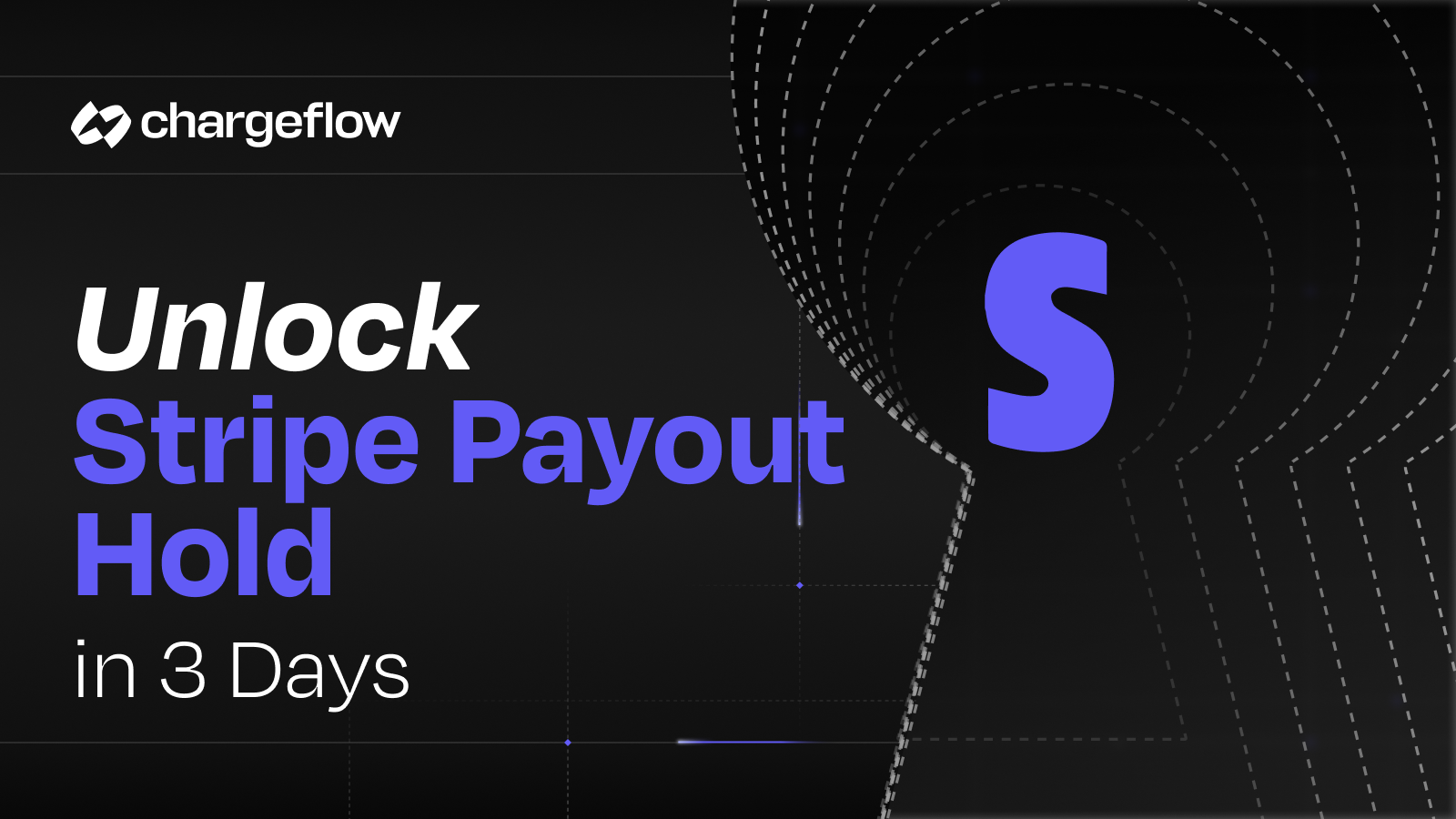Facebook Marketplace Chargebacks: What is This Enigma?

Chargebacks?
No longer your problem.
Recover 4x more chargebacks and prevent up to 90% of incoming ones, powered by AI and a global network of 15,000 merchants.
Unlock the mystery of Facebook Marketplace chargebacks. Discover the ins and outs of this enigma and protect yourself from financial setbacks.
Welcome to the mysterious world of Facebook Marketplace chargebacks! If you're a seller on this bustling platform, buckle up as we unravel this enigma. Chargebacks can be a bumpy ride, causing financial losses and even risking your seller account.
But fear not! In this article, we'll guide you through the ins and outs of Facebook Marketplace chargebacks. From understanding the mechanics behind them to preventing and resolving disputes, we've got you covered.
So, let's embark on this journey to safeguard your sales and reputation. Ready? Let's dive in!
Understanding Facebook Marketplace Chargebacks
A chargeback is a dispute filed by a buyer with their credit or debit card issuer. The buyer may file a chargeback for a variety of reasons, such as:
- The buyer did not receive the item they purchased.
- The item was not as described.
- The buyer was charged for an unauthorized purchase.
When a buyer files a chargeback, Facebook will place a hold on the transaction amount until the dispute is resolved. This means that the seller will not be able to access the funds from the sale.
If the buyer's chargeback is approved, Facebook will deduct the transaction amount from the seller's earnings and charge them a $20 chargeback fee. The seller will also be responsible for any shipping costs that were incurred.
In some cases, the seller may be able to dispute the chargeback. To do this, the seller will need to provide evidence to support their case. This evidence may include shipping confirmation, photographs of the item, or correspondence with the buyer.
If the seller's dispute succeeds, the chargeback will be reversed and the funds returned to the seller.
The Impact of Chargebacks on Sellers
The impact of chargebacks on sellers can be significant. Here are some of the ways that chargebacks can affect sellers:
- Financial losses: Chargebacks can result in financial losses for sellers. When a chargeback is approved, the seller is responsible for the cost of the item, as well as the chargeback fee, which is typically $20. This can be a significant amount of money, especially for small businesses.
- Damage to reputation: Chargebacks can damage a seller's reputation. When a buyer files a chargeback, it is often because they are unhappy with the product or service they received. This can lead to negative reviews and feedback, which can discourage other buyers from doing business with the seller.
- Restrictions on selling: In some cases, sellers who have a high number of chargebacks may be restricted from selling on Facebook Marketplace. This can make it difficult for them to generate sales and grow their business.
To avoid the negative impact of chargebacks, sellers should take steps to prevent them from happening in the first place.
Example Case Studies Chargeback Scenarios
Here are some real-life Facebook Marketplace chargeback scenarios:
Scenario 1:
A buyer purchases a smartphone on Facebook Marketplace. When the buyer receives the phone, it is not as described. The phone is damaged and does not work properly. The buyer files a chargeback with their credit card company.
Resolution:
The seller is responsible for the chargeback. The seller can try to dispute the chargeback, but they will need to provide evidence to support their case. If the seller is unable to dispute the chargeback, they will lose the money they received for the phone, as well as the $20 chargeback fee.
Scenario 2:
A buyer purchases a laptop on Facebook Marketplace. The buyer pays for the laptop with their credit card. The buyer then changes their mind and decides they no longer want the laptop. The buyer files a chargeback with their credit card company.
Resolution:
The buyer is likely to win the chargeback. The buyer has the right to change their mind and cancel a purchase, but they must do so within a certain time frame. In most cases, the buyer has 14 days to cancel a purchase.
If the buyer files the chargeback within 14 days of the purchase, they are likely to be successful.
Scenario 3:
A buyer purchases a bicycle on Facebook Marketplace. The buyer pays for the bicycle with their credit card. The buyer receives the bicycle, but it is not as described. The bicycle is the wrong size and does not work properly. The buyer files a chargeback with their credit card company.
Resolution:
The buyer is likely to win the chargeback. The buyer has the right to receive the item they ordered and described. If the item is not as described, the buyer can file a chargeback.
These are just a few examples of real-life Facebook Marketplace chargeback scenarios. It is important to note that the outcome of a chargeback case will vary depending on the specific circumstances.
Preventing Chargebacks on Facebook Marketplace
When it comes to selling on Facebook Marketplace, chargebacks can be a real headache. They not only result in financial losses but also put your reputation at risk. But fear not, there are proactive steps you can take to minimize chargebacks and keep your business running smoothly.
1. Verify Transactions to Ensure Legitimacy
Before proceeding with any transaction, take a moment to verify the legitimacy of the buyer. Check their profile, and look for reviews and ratings from other sellers. If something feels off, trust your instincts and proceed with caution.
2. Craft Clear and Honest Product Descriptions
Avoid misunderstandings by providing detailed and accurate product descriptions. Include vital information such as size, color, condition, and any potential flaws. Transparency builds trust, which reduces the chances of chargebacks.
3. Showcase High-Quality Product Images
A picture is worth a thousand words, and in this case, it can prevent chargebacks too. Capture clear and attractive images of your products from different angles. This helps buyers know exactly what they are getting, reducing the likelihood of disputes.
4. Stay in Constant Communication with Buyers
Communication is key to a successful transaction. Respond promptly to inquiries and messages from potential buyers. Keeping them informed at every step of the process minimizes confusion and ensures a smooth experience.
5. Offer Excellent Customer Service
Happy customers are less likely to initiate chargebacks. Go the extra mile to provide excellent customer service. Be courteous, accommodating, and address any issues promptly. A satisfied buyer is more likely to resolve any problems directly with you.
6. Consider Using Trusted Payment Methods
Opt for secure payment methods like PayPal or Stripe. These platforms offer buyer protection, giving customers confidence when making a purchase. It also adds an extra layer of security against fraudulent chargebacks.
7. Set Realistic Expectations
Don't overpromise and underdeliver. Be realistic about shipping times, product quality, and any additional services you provide. Setting honest expectations helps prevent disappointment and chargebacks.
8. Keep Thorough Records of Transactions
Maintain a detailed record of each transaction, including receipts, shipping information, and any communication with the buyer. These records can serve as evidence in case of disputes.
9. Utilize Delivery Confirmation and Tracking
When shipping products, always opt for delivery confirmation and tracking services. This provides solid proof that the item reached its destination, making it harder for buyers to claim non-receipt and initiate chargebacks.
10. Resolve Disputes Amicably
If a dispute arises, approach it with a calm and understanding demeanor. Work with the buyer to find a fair solution. Resolving disputes amicably can prevent chargebacks and salvage your seller's reputation.
Tips for Sellers to Avoid Chargebacks
Here are some tips for sellers to help avoid Facebook Marketplace chargebacks:
- Describe your items accurately and completely. This will help to avoid any misunderstandings between you and the buyer. Be sure to include all relevant information, such as the condition of the item, its size, and any features or defects.
- Provide clear and concise shipping information. This will help ensure the buyer receives their item on time and in good condition. Include the shipping carrier, tracking number, and estimated delivery date.
- Communicate with buyers promptly and professionally. If a buyer has any questions or concerns, be sure to respond to them quickly and helpfully.
- Ship items within the agreed-upon time frame. This will help to build trust with buyers and reduce the risk of them filing a chargeback.
- Offer a refund or return policy if necessary. This will give buyers peace of mind and make them more likely to do business with you.
Facebook's Policies on Chargebacks
Based on Chargflow research these are prominent Facebook policies on chargebacks:
- Chargebacks are reviewed on a case-by-case basis. Facebook will review the chargeback and all relevant information, such as the buyer's complaint, the seller's response, and any supporting documentation.
- The funds will be returned to the buyer if the chargeback is approved. The seller will be responsible for the cost of the item, as well as the $20 chargeback fee.
- If the seller believes the chargeback is invalid, they can dispute it. The seller will need to provide evidence to support their case. If the seller is successful in disputing the chargeback, the funds will be returned to them.
- Sellers who have a high number of chargebacks may be restricted from selling on Facebook Marketplace. This is to protect buyers from fraud and scams.
Legal Implications of Chargebacks on Facebook Marketplace
Here are some legal implications of chargebacks on Facebook Marketplace:
- Chargebacks can be a violation of Facebook's terms of service. Facebook's terms of service state that buyers cannot file a chargeback unless they have a legitimate reason. If a buyer files a chargeback for an invalid reason, they could violate Facebook's terms of service and could have their account suspended or terminated.
- Chargebacks can be a violation of the buyer's credit card agreement. The buyer's credit card agreement may state that the buyer can only file a chargeback if they have a legitimate reason. If the buyer files a chargeback for an invalid reason, they could violate their credit card agreement and could be charged a fee by their credit card issuer.
- Chargebacks can be a violation of the seller's rights. The seller has the right to receive payment for the item they sold. If the buyer files a chargeback for an invalid reason, the seller could lose the money they received for the item, as well as the $20 chargeback fee.
If you are a seller who has been the victim of a fraudulent chargeback, you may have legal recourse. You can contact an attorney to discuss your legal options.
Best Practices for Buyers on Facebook Marketplace
Some best practices for buyers on Facebook Marketplace:
- Do your research: Before you buy anything on Facebook Marketplace, take some time to research the item you're interested in. Read the seller's description carefully, and check out the reviews from other buyers. If you can, try to find the same item for sale elsewhere to compare prices.
- Meet in a public place: When you meet with the seller to pick up the item, choose a public place where there are other people around. This will help to protect you from being scammed.
- Inspect the item carefully: Before you hand over any money, take a close look at the item to make sure it's in the condition that was described. If you're not satisfied with the item, don't be afraid to walk away.
- Pay with a secure payment method: When you pay for the item, use a secure payment method like PayPal or Venmo. It will help to protect you from fraud.
- Beware of scams: Several scams can occur on Facebook Marketplace. Be aware of the most common scams, and don't fall for them.
Final Thoughts
Mastering Facebook Marketplace chargebacks is crucial for sellers. Prevent disputes with clear descriptions, prompt communication, and verification. Be cautious, as chargebacks result in financial losses and reputation damage.
Stay informed about Facebook's policies and legal implications. By following best practices, you can build trust with buyers and create a successful marketplace experience.
Remember, chargebacks may be enigmatic, but with awareness and diligence, you can navigate this terrain successfully. Stay vigilant, protect your business, and keep thriving on Facebook Marketplace.

Chargebacks?
No longer your problem.
Recover 4x more chargebacks and prevent up to 90% of incoming ones, powered by AI and a global network of 15,000 merchants.






























.png)








